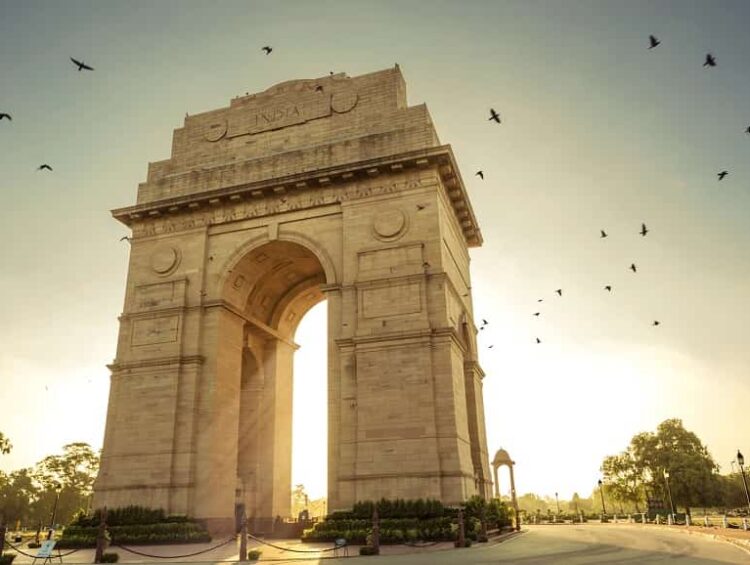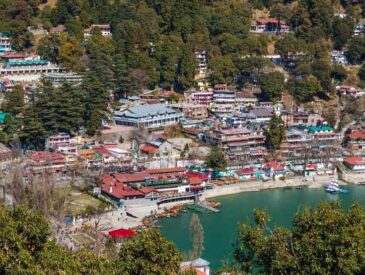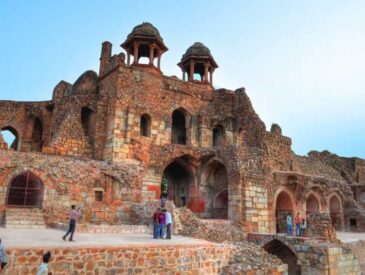Delhi being the capital city of India is one of the major hubs of the country. Not only is it the power centre, but it is also a very popular tourist destination as well. People from far and near travel to this city, just to experience the remnants of the bygone eras that still stand tall in Delhi today. Delhi as a city is known for its architectural wonders. Apart from these, the highlights of Delhi are its food and dirt cheap shopping bazaars. A few architecture and constructions make certain points in Delhi very beautiful.
One such place is definitely the Delhi Rajpath. If you visit this pathway during the evening, then a beautiful structure, in the shape of an arch will greet you. Beautifully decorated with lights and standing tall and proud on the Rajpath, this structure is known as the India Gate. This is a War Memorial that was mainly constructed to honour the Indian war heroes who had laid down their lives during the First World War. The India gate Delhi reminds everyone who passes through the Rajpath of the great sacrifices of this nation’s soldiers and their families.
General Facts about the India Gate
The work of the construction of the India Gate began a few years after the First World War ended. Since India was a British colony at the time of the Great War, as World War I was previously known, many Indian soldiers were forced to fight for the British with the opposing forces. Hundreds and hundreds of Indian soldiers were taken overseas to fight. About 82000 Indian soldiers died fighting for the British Empire. Names of many soldiers who had laid down their lives are inscribed on the walls of this structure. About 2.1 million soldiers were sent from India to fight during the Second World War. There are a lot of unnamed heroes, who have laid down their lives, fighting to protect and serve their homeland. This memorial stands as a remembrance and salute to all those heroes who had sacrificed everything for their motherland.
An Imperial War Graves Commission or IWGC was formed in order to build memorials and graves in many countries, who had lost their soldiers during World War I. The construction of the India Gate was also a part of this commission. The construction of this memorial began in the year 1921 when the Duke of Connaught laid the foundation stone. However, this memorial took a long time to be built, and hence, was finally completed in the year 1931.
- Suggested Tour Itinerary: Heritage Walk in Delhi
General features of the memorial
This tall arching structure is about 42mts high. It was designed by the expert Edwin Lutyens, who also had designed the city of Delhi. The entire structure is supported on a base that is made from red coloured Bharatpur stones. The total area covered by this memorial is about 306,000sq.mt., and the diameter of the entire structure is about 625mt. The main inscription on the India Gate honours all the soldiers that you have fought for the pride and honour of their country in their own homeland and abroad.
Who does the India Gate honour?
Though the India Gate was mainly built to honour the soldiers, who had laid down their lives during the First World War, it also honours the heroes of the Afghan War. After India had achieved independence from the British Rule, it was also treated as a memorial for all those, who had fought for the independence of their country from the grasp of foreign yolk. Right in the front of the India Gate is another small arch, beneath which there is a small platform. On this platform rests an inverted rifle, and it is capped by a war helmet. This is known as the Amar JawanJyoti or the Flame of the Immortal Soldier. There is a flame here that burns all day night and long commemorating the undying spirit of the soldiers. This memorial was constructed right after the Bangladesh Liberation War in 1971. It was inaugurated by Indira Gandhi in the following year on the Republic Day. India had helped its neighbour to fight against the clutches of then West Pakistan and emerge as an independent nation known as Bangladesh.
A Few Interesting Facts about the India Gate
The India Gate is a very important shrine and on every occasion that is of national importance, the President and the Prime Minister of the country come here to pay their homage to the soldiers. It also happens to be one of the largest memorials that have been constructed in India. Tourists, who come to visit Delhi, definitely visit this memorial at least once. In general, locals often hand out in the areas near the India Gate. The Indian Armed Forces has a total of three services, and all of these sections are employed to guard the Amar Jawan Jyoti, at every hour of the day. The parade that is held on every 26th of January starts from the Rashtrapati Bhavan and then takes the Rajpath and passes through the India Gate.
How to Reach the India Gate?
India Gate is one of the most popularly visited sites in Delhi. Both tourists, as well as locals, often make their way to this memorial. The India Gate is very well kept and so are its surrounding areas, and hence, it serves as a picnic spot for the locals. This is also a popular hangout area for the local kids during the sultry Delhi summer evenings. There are various ways through which you can reach this memorial, but the best option is taking the metro rail. The nearest metro station to india gate is the Central Secretariat. The India Gate lies at a walking distance from this metro station. The Central Secretariat is well-connected to both the Yellow Line as well as the Violet Line, making it much easier for you to catch trains to this station. This is the fastest way to travel to the India Gate, on Rajpath.
The India Gate signifies the sacrifice of millions of soldiers, who died to protect the honour of their country. Thus, this is one place that you must visit when you take a trip to the capital of India.







An installation of a reversed L1A1 Self-loading rifle, crowned with a combat helmet on a black marble podium, is located beneath the India Gate arch. Four urns with continuously burning CNG-fueled flames encircle the building, and the words “Amar Jawan” are written In Gold On Each Face Of The Cenotaph.